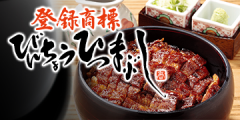- Home
- Sightseeing Spots
Sightseeing Spots
61 - 80 / 214 RESULTS
-
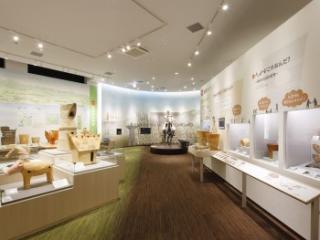
Northern Area
Shidami Kofungun Experience Museum
Approximately 200 tumuli were constructed in Nagoya with a third of them (66) confirmed in Kamishidami, Moriyama-ku; and seven--known as the Shidami Kofungun (Shidami Tumulus Group)--are designated national historic landmarks. The Shidami Kofungun occupies a narrow range of 1.7 km from east to west and 1 km from north to south, consists of tumuli built from the beginning of the Kofun (tumulus) period to its end, and is one of the rarest clusters of tumuli in all of Japan. The Shidami Kofungun Historical Area has been maintained to preserve the tumuli. The Shidami Kofungun Historical Area is something like a true-to-life encyclopedia in which you can actually walk around tumuli seeing their various characteristics and differences by the period they were built such as shape and size. The Shidami Kofungun Experience Museum (known as "SHIDAMU" for short) opens in the Shidami Kofungun H… See More
Approximately 200 tumuli were constructed in Nagoya with a third of them (66) confirmed in Kamishidami, Moriyama-ku; and seven--k…See More
-

Northern Area
Nex Plaza" (Nagoya Expressway Public Relations Information Center)
Facility where both children and adults can have fun while deepening their understanding of the Nagoya Expressway. It introduces the construction and management of the expressway and includes interactive exhibits such as the "Driving Simulation," where visitors can design and experience driving on the expressway. The facility also features detailed construction models, and visitors can book in advance for tours of the traffic control room. See More
Facility where both children and adults can have fun while deepening their understanding of the Nagoya Expressway. It introduces …See More
-

Northern Area
Vantelin Dome Nagoya
This stadium is the home ground of the Chunichi Dragons. Baseball fans can enjoy Dragons matches from regular seats, prime box seats for four people, prime twin seats for two people, and more. The stadium's boxed lunches (tamaben) are also popular. Besides Dragons games, the stadium also hosts exhibitions, concerts, and other events. The goods shop Prisma Club is open even on days when there are no events (closed on Mondays if there is no event). See More
This stadium is the home ground of the Chunichi Dragons. Baseball fans can enjoy Dragons matches from regular seats, prime box se…See More
-

Northern Area
Meijo Park
The collective name for the parks surrounding Nagoya Castle, including Ni-no-Maru, San-no-Maru, and up to the northern public park. It is most often used to refer to the park north of the castle. The park has a wide grassy space surrounding Ofukeike Pond that has a stream running through it, a seasonal garden, Meijo Park Flower Plaza, and other areas besides. There are many seasonal exhibitions and events held, as well as regularly held lectures on flower arranging and other topics, gardening consultations, and more. See More
The collective name for the parks surrounding Nagoya Castle, including Ni-no-Maru, San-no-Maru, and up to the northern public par…See More
-

Northern Area
Ryusenji
Ryusenji Temple is a noted temple called the inner shrine of Atsuta Jingu and has the name of Shoutouzan. Denkyo-daishi (a great teacher of Buddhism) is said to be the founder of this temple. Niomon (Deva Gate) and a wooden statue of Jizobosatsu (the guardian deity of travelers and children) are designated as important cultural properties. In addition, the temple houses several hundreds of Buddhist statues including Batokannon (an image of Kannon which has a human body with the head of a horse) carved by Enku. Shops dealing in hobbyhorses operate on Setsubun (February 3). See More
Ryusenji Temple is a noted temple called the inner shrine of Atsuta Jingu and has the name of Shoutouzan. Denkyo-daishi (a great …See More
-
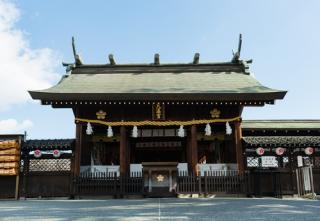
Northern Area
Yamada Tenmagu Shrine
In 1672, Tokugawa Ietsuna, the 4th shogun, encouraged education and learning. The lord of Owari domain, Tokugawa Mitsutomo, valued education and decided to enshrine Sugawara no Michizane's divine spirit in Yamada, now part of Aichi Prefecture. Yamada Tenmangu Shrine became a guardian deity protecting people from misfortunes and bringing blessings. It was located in the inauspicious direction of Nagoya Castle, making it highly revered. See More
In 1672, Tokugawa Ietsuna, the 4th shogun, encouraged education and learning. The lord of Owari domain, Tokugawa Mitsutomo, value…See More
-

Northern Area
Shonai Ryokuchi Park
A health oriented park that connects people and greenery. Using the Odai Water Reservoir along the Shonai River, this comprehensive park revolves around the theme of "water, greenery, and sunshine." With a central lawn area, it features flower gardens, a rose garden, a bird sanctuary, and more. Facilities like tennis courts, cycling paths, and a skate park are also available. Additionally, the Green Plaza within the park houses a greenhouse and an indoor space for various activities. See More
A health oriented park that connects people and greenery. Using the Odai Water Reservoir along the Shonai River, this comprehens…See More
-

Northern Area
Shirasawa Valley
Shirasawa Valley is an artificial valley where a park and a river have been integrated. It's a precious flowing river within the urban environment, surrounded by abundant greenery. You can enjoy the beauty of the four seasons created by nature to the fullest here. See More
Shirasawa Valley is an artificial valley where a park and a river have been integrated. It's a precious flowing river within the …See More
-

Northern Area
Togokusan Fruits Park
A place of nature and history, Mt. Togoku (198 m) is the tallest mountain in the city, and is surrounded by 70 kofun sites. Togokusan Fruits Park is a multipurpose agricultural park at the base of the mountain that uses the rich natural surroundings. In the park there is an orchard where around 900 trees of 17 species of fruit grow, including peaches, Asian pears, and apples. There is a greenhouse where you can see papaya, jackfruit, and other rare tropical fruits, and a fruithouse where you can see exhibits of various sample fruits. Besides these, the park also has a fishing corner, Japanese-style garden, all-season flower garden, a restaurant, and shops. The park is a famous place for weeping cherry blossom trees in the spring. See More
A place of nature and history, Mt. Togoku (198 m) is the tallest mountain in the city, and is surrounded by 70 kofun sites. Togok…See More
-

Northern Area
Historic Townscapes of Nakaotai
This town was built along the Iwakura Kaido highway, which bustled with life as vegetables were brought from Iwakura to the Fresh Produce Wholesale Market of Biwajima. Townhouses and storehouses remain to this day, and you can feel the history of the highway. See More
This town was built along the Iwakura Kaido highway, which bustled with life as vegetables were brought from Iwakura to the Fresh…See More
-

Northern Area
Nagoya Noh Theater
The world's largest noh theater. Enjoy a mystical world. The building has a refined Japanese-style exterior, as is fitting for occasions such as watching a noh performance. Its defining features are the stage made entirely of Japanese cypress wood, the wooden interior fittings, and the large viewing area with 630 seats. Besides being used for noh, kyogen, and other traditional performing arts, the space is also used for international conferences, lectures, weddings, and so on. There is also a conference room that holds 99 people (with a lecturers' waiting room) and can be used for conferences, training programs, and more. In the exhibition room, there are panel displays and videos that explain the history and charms of noh in a way even beginners can understand, as well as explanations about noh in Nagoya. Admission to the exhibition room is free. Four to five days a month, t… See More
The world's largest noh theater. Enjoy a mystical world. The building has a refined Japanese-style exterior, as is fitting for…See More
-
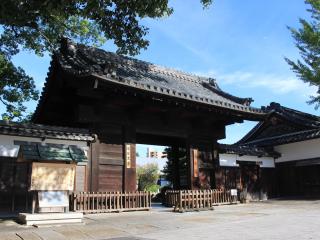
Eastern Area
Tokugawaen Garden
Tokugawaen Garden is a Japanese garden with walkways winding around a central pond in the style of major daimyo gardens from the Edo period. A clear stream flows from a waterfall through a ravine and continues to a pond representing the ocean, a sight that symbolically condenses Japan's natural landscape. Furthermore, Tokugawaen is characterized by hilly terrain, transplanted woods, and large rocks appearing from all angles. The overall magnificence of the daimyo garden can be seen through the use of bold changes in composition and the incorporation of a wide variety of elements. People can enjoy the garden throughout the four seasons with beautiful greenery, autumn colors, and flowers such as peonies and irises. See More
Tokugawaen Garden is a Japanese garden with walkways winding around a central pond in the style of major daimyo gardens from the …See More
-
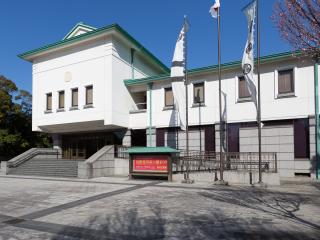
Eastern Area
The Tokugawa Art Museum
An art museum of important artifacts from the Owari Tokugawa family, including items inherited from Tokugawa Ieyasu This art museum has a collection of more than 10,000 feudal lord implements, starting with items that once belonged to Tokugawa Ieyasu, and items treasured by the first head of the Owari Tokugawa family, Yoshinao (Ieyasu's ninth son), and his descendants. The museum is proud to hold nine National Treasures, including the Illustrated Scroll of The Tale of Genji, 59 important cultural properties, and many other high quality treasures that have been preserved in good condition. The main hall is registered as a national tangible cultural property. See More
An art museum of important artifacts from the Owari Tokugawa family, including items inherited from Tokugawa Ieyasu This art m…See More
-

Eastern Area
Higashiyama Zoo and Botanical Gardens
A "forest where you can meet the animals of the world" surrounded by nature in the middle of a city There are tons of popular animals at this zoo! From tiny medaka fish to huge elephants, it is home to the largest number of animals in Japan. Come and see the wide variety of animals. There are many facilities, including the gorilla and chimpanzee house—home to famously handsome gorilla Shabani—the Asian elephant house, and the koala house. Here, you can not only watch the animals, but also learn about their ecologies and habitats through educational displays, so you can learn while having fun. Including the greenhouse and the natural woods on the hillsides, the botanical garden is home to around 7,000 species of plants. The cherry blossom pathway has around 1,000 cherry trees of about 100 different species, which all bloom in the spring. In the fall, around 500 trees—mainly su… See More
A "forest where you can meet the animals of the world" surrounded by nature in the middle of a city There are tons of popu…See More
-
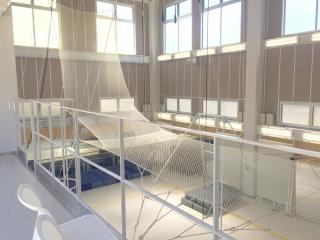
Eastern Area
Fly'n Fit Trapeze Studio
See More
See More
-
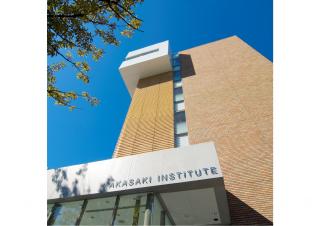
Eastern Area
Nagoya University Akasaki Institute
The Akasaki Institute was built to commemorate the research achievements of Distinguished Professor Isamu Akasaki, promote original and cutting-edge scientific and technological research at Nagoya University, and contribute to society at large. The exhibition room on the first floor is free to enter and open to the public. On display are a 160-inch LED display, traffic lights and mobile phones using blue light-emitting diodes, Professor Akasaki's research achievements, and experimental equipment. In addition, you can see an official replica of the Nobel Prize medal awarded to Professor Akasaki and Professor Hiroshi Amano in 2014, as well as the same equipment that Professor Akasaki donated to the Nobel Museum. See More
The Akasaki Institute was built to commemorate the research achievements of Distinguished Professor Isamu Akasaki, promote origin…See More
-
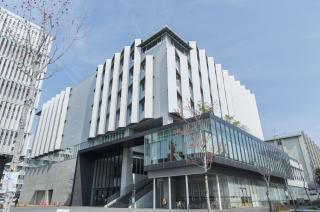
Eastern Area
Nagoya University 2008 Nobel Prize Exhibition Hall
This exhibition hall was opened to commemorate the 2008 Nobel Prize in Physics awarded to Dr. Toshihide Masukawa and Dr. Makoto Kobayashi, both graduates of Nagoya University, and the 2008 Nobel Prize in Chemistry awarded to Dr. Osamu Shimomura, a former assistant professor at the same university. It displays official replicas of Nobel Prize medals and numerous explanatory panels on Nobel Prize research, allowing visitors to get up close and personal with the research that led to the Nobel Prize. It also introduces some of the research and educational styles of the Shoichi Sakata Laboratory (Elementary Particle Theory Laboratory, commonly known as "E-Lab"), which produced Dr. Masukawa and Dr. Kobayashi, and the Yoshimasa Hirata Laboratory, which trained Dr. Shimomura. See More
This exhibition hall was opened to commemorate the 2008 Nobel Prize in Physics awarded to Dr. Toshihide Masukawa and Dr. Makoto K…See More
-

Eastern Area
Nagoya University Chemistry Gallery (Noyori Materials Science Laboratory)
This gallery on the second floor of the Noyori Materials Science Laboratory was built to commemorate Nagoya University Distinguished Professor Ryoji Noyori, who received the Nobel Prize in Chemistry in 2001. It is open to the public with the aim of widely communicating the importance of chemistry to the general public and nurturing the next generation of researchers, and includes an exhibition room related to Distinguished Professor Noyori's Nobel Prize with the Inspiration Space for the Next-generation Researchers, Introduction to Dr. Noyori's Footsteps, and other sections. See More
This gallery on the second floor of the Noyori Materials Science Laboratory was built to commemorate Nagoya University Distinguis…See More
-
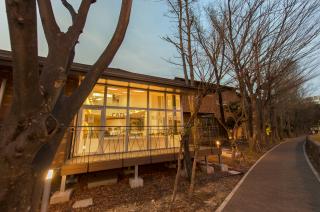
Eastern Area
Nagoya University Gender Research Library
The Gender Research Library is open to anyone interested in gender issues. You can browse books related to women's, feminism, and gender studies, as well as various archives and collections. The library also plans and holds lectures, seminars, reading groups, etc. in the library's lecture rooms. See More
The Gender Research Library is open to anyone interested in gender issues. You can browse books related to women's, feminism, and…See More
-
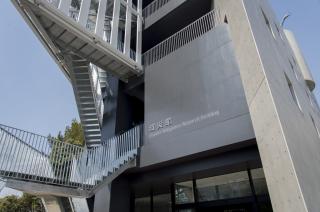
Eastern Area
Nagoya University Disaster Mitigation Research Building
Nagoya University’s Disaster Mitigation Research Building is a base for the realization of a disaster-mitigating society through collaboration between industry, academia, government, and the private sector. It is the university's first seismically isolated building and is equipped with self-powered and solar power generation equipment. In normal times, it serves as a place for cutting-edge research into disaster prevention and mitigation as well as a learning space open to the public. Should a large-scale disaster occur, it acts as a base for disaster response by the university and local area. In addition, it is equipped with a ground monitoring system as well as an experimental facility that reproduces large-amplitude, long-period seismic shaking, and the entire building serves as a place for the development and testing of architectural earthquake-resistance technology. See More
Nagoya University’s Disaster Mitigation Research Building is a base for the realization of a disaster-mitigating society through …See More













